The air is peaceful, with the scent of sweet grapes that can only be found in wine country. The gentle, autumn breeze blows against my face as I listen to the faint rattle off in the harvested field of corn. It’s quiet here, yet my ears are still ringing from the racket known as Los Angeles rush hour traffic—it’s merely my imagination and this rapid and dramatic change of pace has left my head feeling in shock. I lean a few minutes longer against the wooden watertower that overlooks the Santa Ynez Valley to soak it all in before trekking back to reality. This is Central California’s backyard, pristine and beautiful, and home to the historic Mattei’s Tavern.

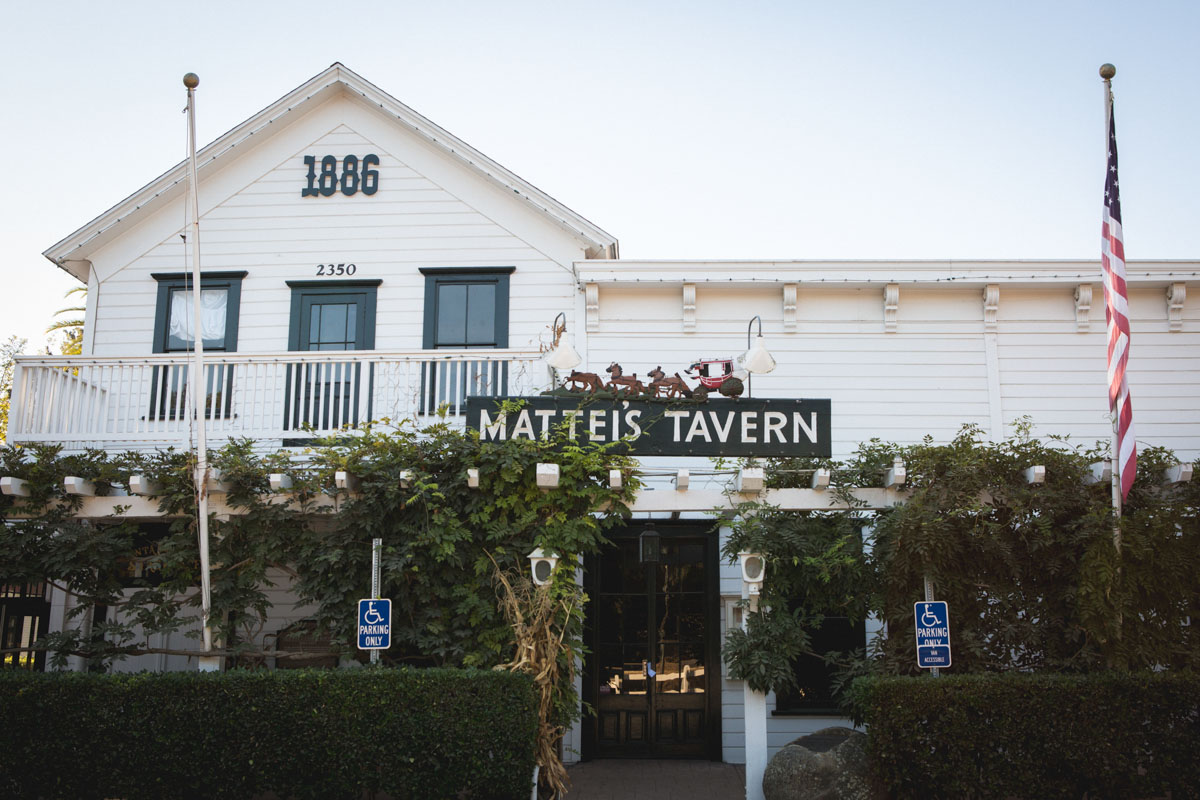
Built in 1886 as a stage coach stop by a Swiss-American named Felix Mattei, Mattei’s Tavern (previously known as The Central Hotel, Los Olivos Hotel, and then Stage Coach Inn) is one of the oldest wooden structures in California, just off of Highway 154 in Los Olivos. The two-story building served as a bar, dining room, an inn, and even a brothel for travelers making their way to Northern California (or vice-versa).
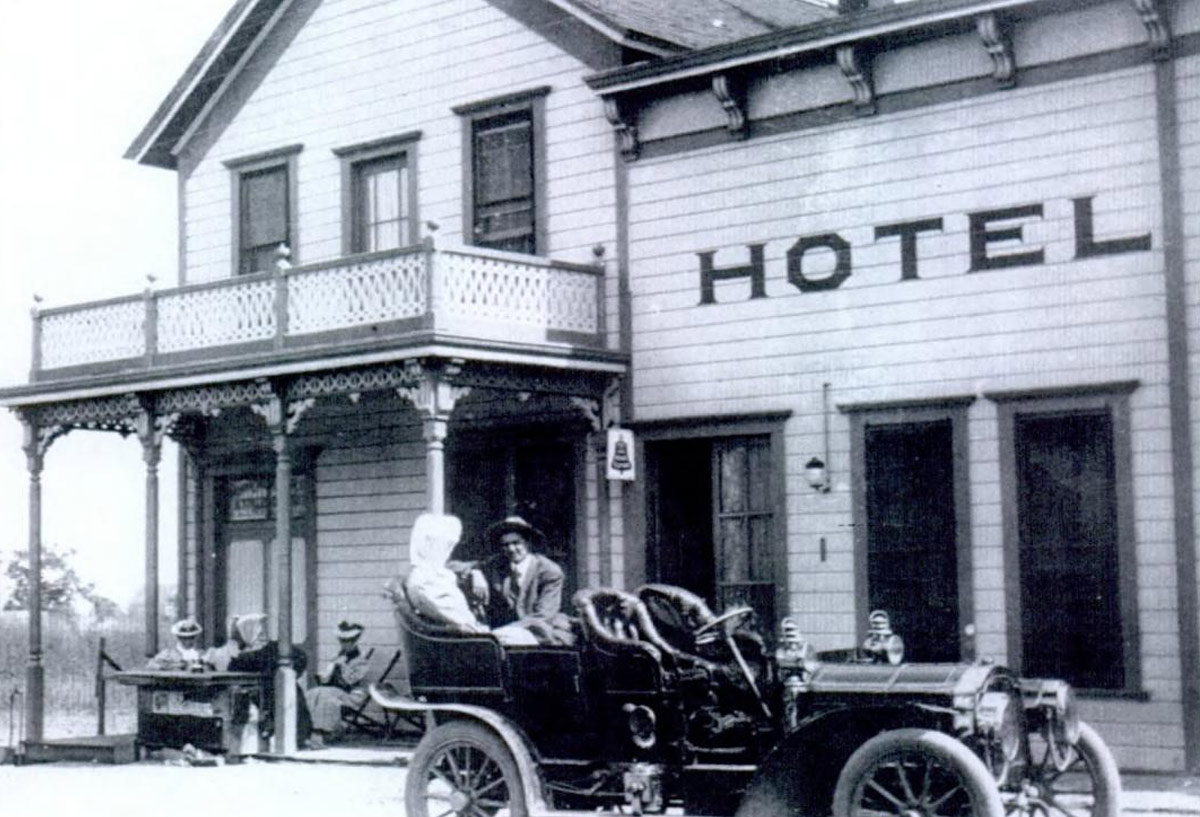

By November 16, 1887, the Los Olivos Pacific Coast Railway Complex had broken ground on this very soil—from Los Alamos to Los Olivos—providing a connection to San Luis Obispo and Port Harford. The railroad system was literally built by the hands of three hundred Chinese workmen, which majorly influenced the overall development of commerce for this valley and the Central Coast.
After the railway was completed, many of the Chinese workers were hired as local ranch cooks across the valley. Among them was Gin Lung Gin (1871-1947), born in Goleta, who was later employed by Mattei’s Tavern as a cook and remained there for many years. He lived in a tiny room behind the tavern (which remains today) and was revered for his game recipes. On the menu at the time was duck, geese, deer, and clams from Pismo Beach. As for alcohol, it was always readily available—even during prohibition—despite Lucy “Fisher” Mattei’s (Felix’s wife) affiliation to the Women’s Christian Temperance Union.
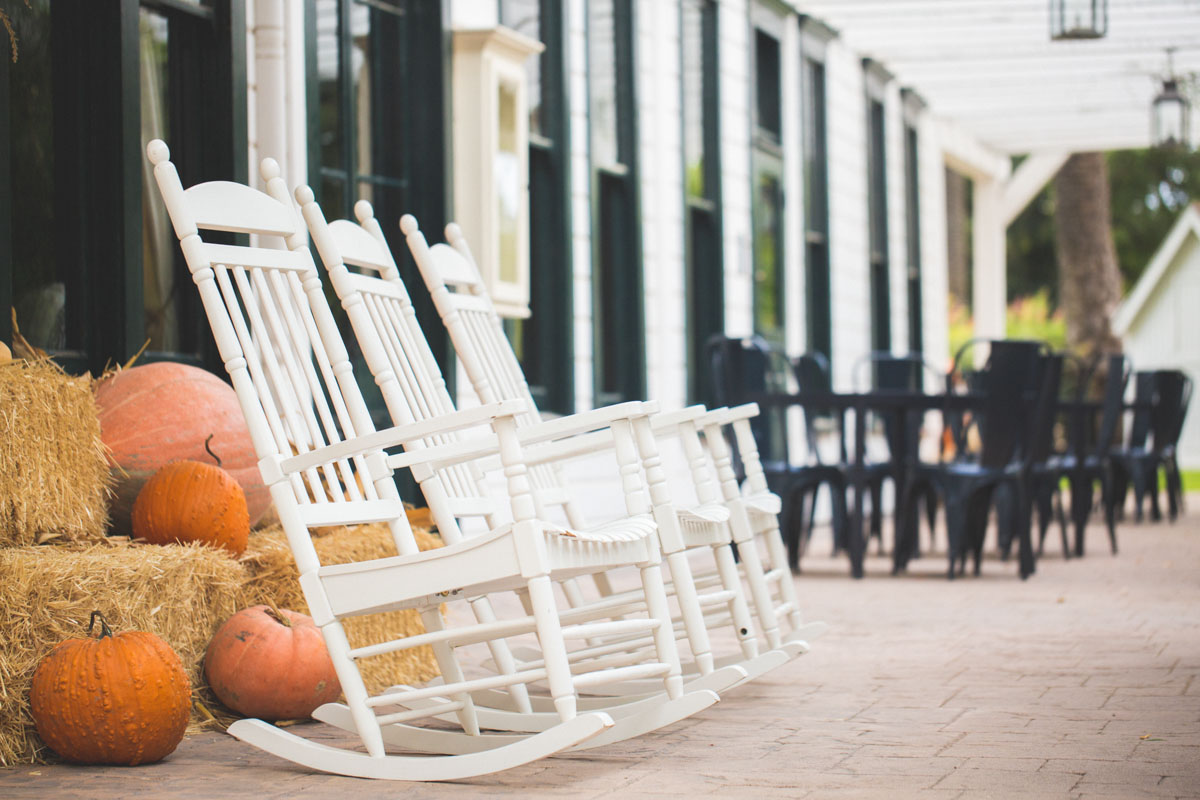
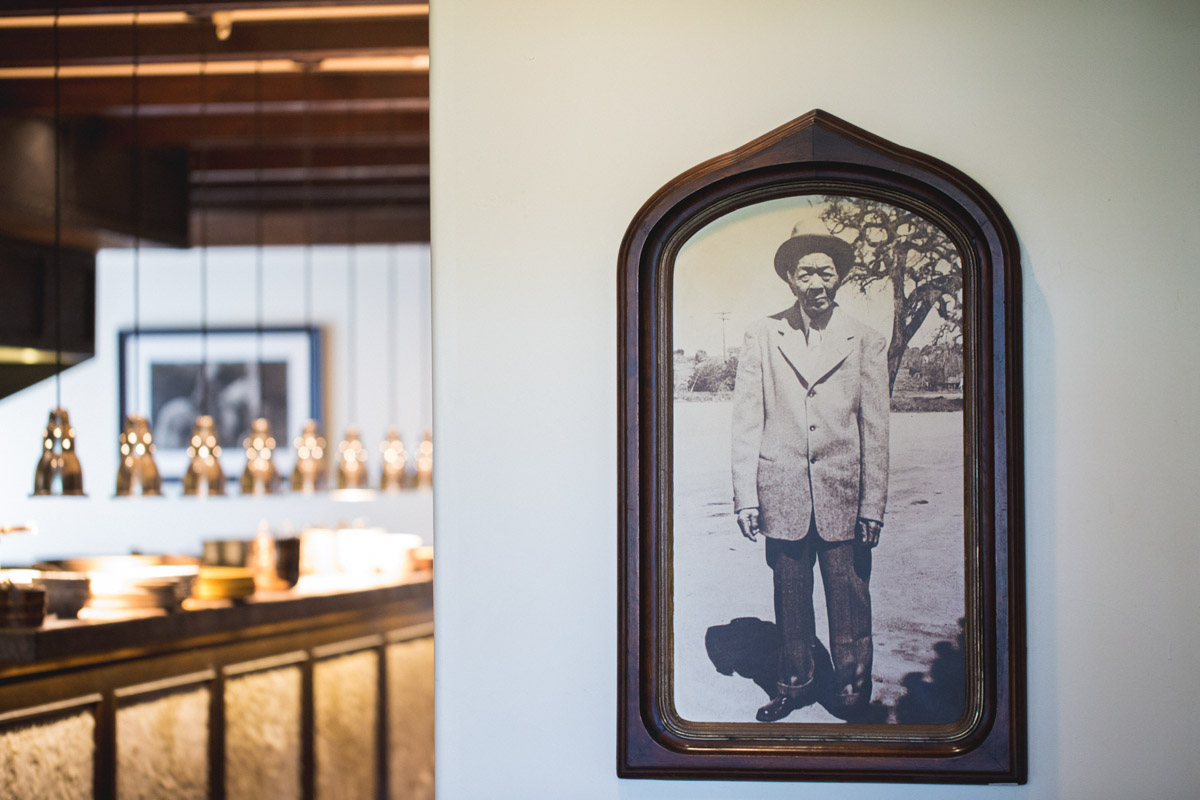
Today, the area is more of a sleepy town where tourists drink their way through the valley from vineyard to vineyard and travelers speed up north to San Francisco or south to Los Angeles. No longer a hotel (or a brothel, for that matter), Mattei’s Tavern has been placed in the hands of Texas-born Robbie Wilson, who is Executive Chef and Partner of the property, as of 2013.
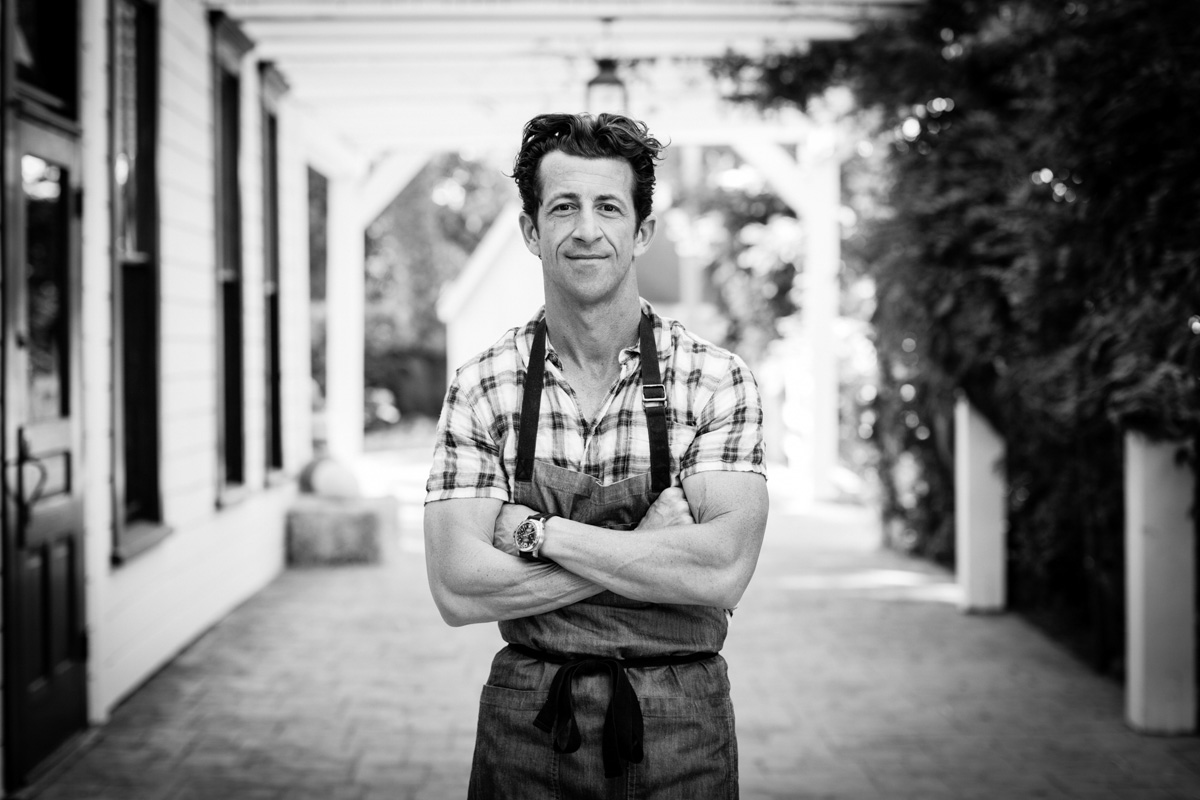
Robbie and I walk through the compound as he enlightens me of the rich history about the land, his dedicated pursuit in respecting the valley and its abundance of quality produce, what the future holds for Mattei’s Tavern, and his occasional vulgar sense of humor (he’s a chef, after all). Robbie is somewhat of an anomaly for this region. Whereas many aspiring chefs leave small towns to pursue the fame and glory in bustling cities like Los Angeles, New York, San Francisco, and Chicago, classically trained Robbie (through the likes of Maison Troisgros, Craft, and The French Laundry) marked the 128 year old, historic tavern in Los Olivos, CA, his culinary playground. And it doesn’t disappoint.
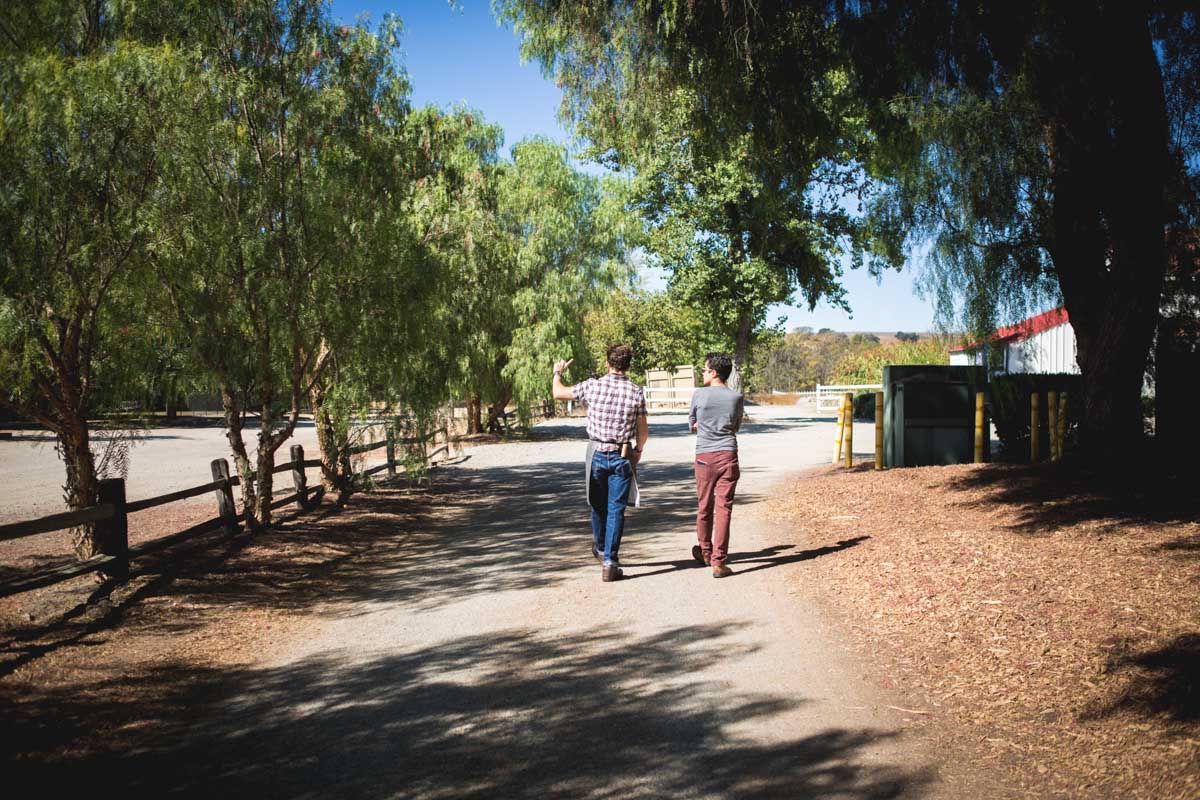
Where was home?
Robbie Wilson: Dallas and then when I went to high school I ended up in Abilene. Then we moved out to West Texas and went to Texas Tech University to play soccer.
I worked for a French chef while I was in college at a place called Gabriel’s, which was really cool because Gabriel was this old school French guy who married an American—this is going to sound really confusing—and her brother was the head of cardiology. He had all these cardiologists who loved Bordeaux and they were into French food at the time but had nothing to eat. So he said, “Hey, we have this great idea. Let’s get a French guy here and open a restaurant.”
So it was perfect timing. I got to work for this guy in college. I was going to be in law school like my dad, my uncle, and my grandfather—everybody is an attorney in my family—but I bailed on law school; I was going to go to the French Culinary Institute (FCI) in Manhattan. I had applied and was accepted, and Gabe was like, “Don’t do that. Don’t waste $60K. You learned everything from me.” We made our own shit—everything was so old school. He said, “Just go to France, get abused, get beat up and decide if you want to do it there.” So I went to Roanne and worked at Maison Troisgros and loved it. They called me “Roast Beef.” And then I never looked back. That’s how it kind of all started for me.

Why the transition from law school to cooking?
You don’t have to spend too long with me to realize I wasn’t a lawyer. I was first an art major in college. For me, there was a comfort level with an argument. Everything at our table with the men was an argument—they’re all lawyers—so I knew how to argue. But I don’t think I was happy arguing.
There really wasn’t much of a transition. I loved to cook. I even cooked in high school at a steakhouse. It was easy—fried onion rings, beer-battered zucchini—and I liked it. It was something that came fairly easy to me. I think it was because I loved to eat. I was always into food whether it was a taco or my grandmother’s cooking. My mom was a fantastic cook, but she did five things; she didn’t try or experiment with recipes. But the five things she did, she did really well.
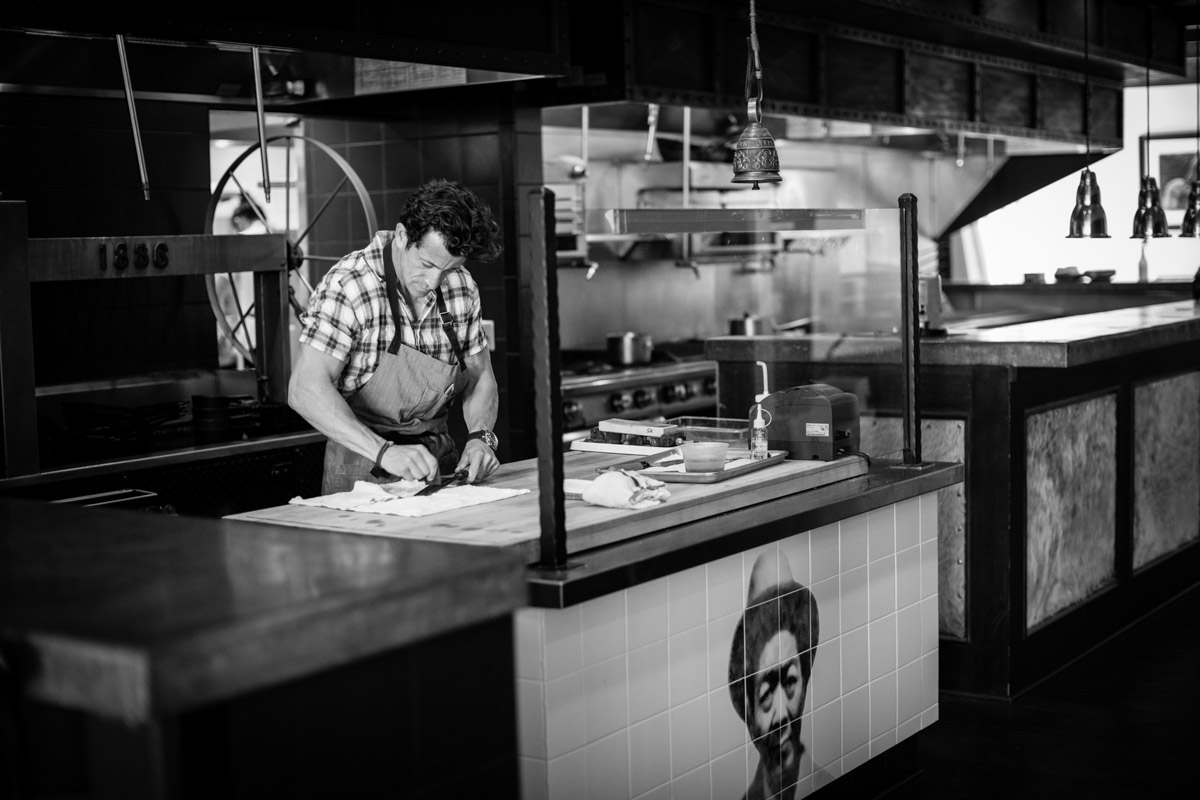
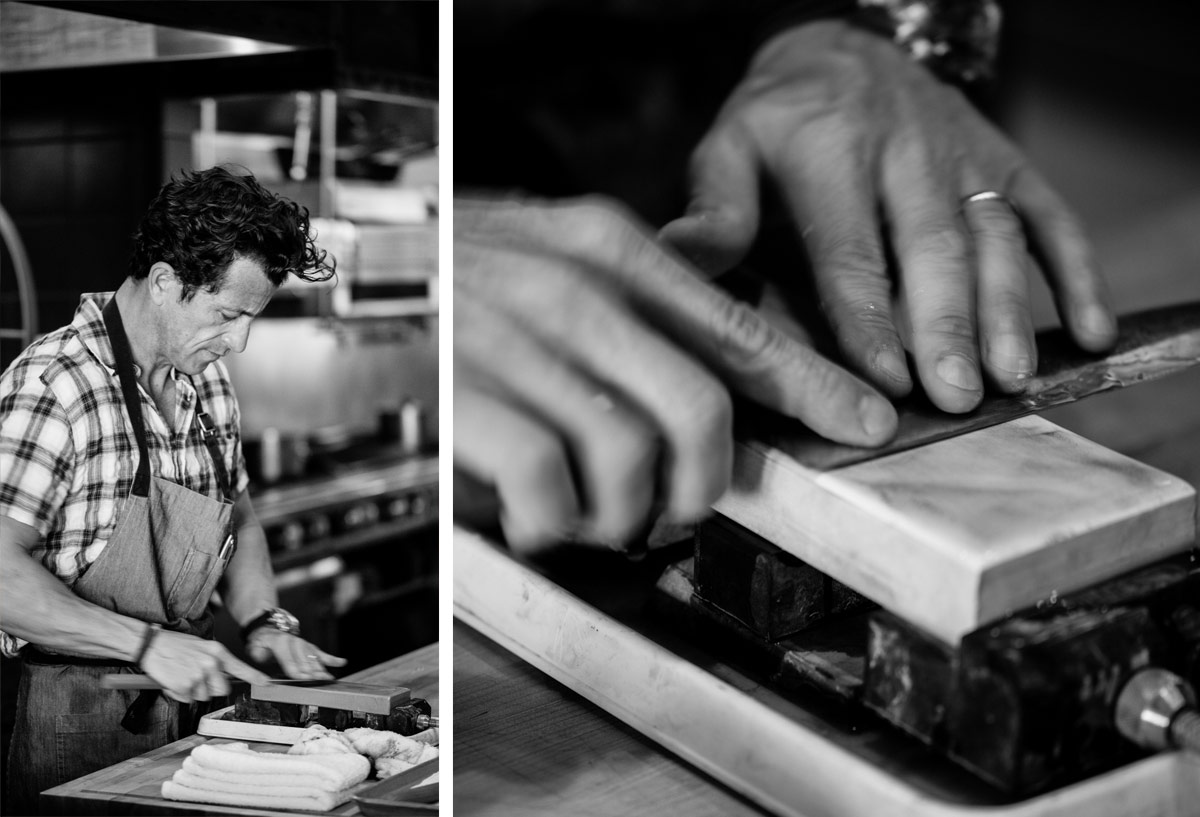
My earliest memories are playing soccer, being in Europe and eating food overseas that you couldn’t get in Texas at that time. And I would come back and think, “This isn’t Italian food,” or, “This isn’t Spanish food,” and never forgetting that. In my earliest memories, whether it was trips with my dad or family trips when we went to Jamaica and ate jerked chicken for the first time and jerked pork—I look back now and still remember those memories more than the time I went to Disney World. I remember eating jerked pork in the middle of nowhere, being the only white dude, and being nine years old drinking a Red Stripe.
Those are the things I remember, so it all makes sense to me. But at the time, you’re in college and this is the ‘90s. It really wasn’t thought of like a profession, so it kind of felt like something you did just to make money to get through college. And you realized you’re exposed to real professionals. But you could be creative—I was an art major. You could be a business major and run your own restaurant. It started to make sense probably my senior year in college that I could do this for a living. And here’s an idea: do something for a living that you truly love and you can’t wait to wake up in the morning and be a part of something greater. For me, that’s why I still do this. Every day is different.
You classically trained in France and at one point, at The French Laundry, as well. How was that like?
It was, for me, a little bit of a religious experience. Every cook, every chef de partie probably has his own kitchen right now. But at the same time it was the first time I really felt like I was around cerebral people as well. And if you look at people I worked with early in my career, a guy like T.K. (Thomas Keller) or George Mahaffey, if he decided to be an architect, he’d be in the same position with architects as he is in kitchens right now. All these guys were not culinary school guys, for the most part; they were all going to do something else. George Mahaffey, an award-winning chef who’s one of my mentors—has a PHD in philosophy. It’s really interesting to be around. It felt more cerebral at the time and I really enjoyed that. There was so much thought.
After going through your rite of passage as a cook, how do you see the industry now?
I’m going to sound old when I say this, but it’s different. If you look at the guys like Keller and Coliccio, they do what they do and they started out of the love and the desire—not the passion, because passion is perishable—the desire to cook and do something great. They weren’t exposed to guys on television—you forget that it’s blue collar. You can grow up now without realizing that. You have to put your hand down a drain sometimes and pull some shit out. They don’t show that on television.

There are a lot of great restaurants in this country, and I don’t think you have to suffer like you used to. If you live in New York or Los Angeles, every restaurant feels like they’re shorthanded or they need better people because there’s a little bit of bullshit in the kitchen or they’re pushing you too hard. You can go right across the street and maybe make a couple more dollars per hour.
Back in my day, there were a handful of guys you wanted to work for. Sure, you look at Noma and the French Laundry in some regard, but there are so many more kitchens. I don’t feel like you really have to suffer. With technology, kids today—unless they went to culinary school—they can learn to put food in a bag and they can cook it that way. You can start in kitchens now and not really know the fundamentals that an Escoffier preached; you can bypass that now. I think it catches up with you later. There was no health insurance back in my day. There were no five-day work weeks. They were six days at the least. There wasn’t overtime. You didn’t clock in. It was shift pay and if you were told to be there at 10:00 and you got there at 9:50 you were 10 minutes late. I think that probably happens in some kitchens, but the climate has changed.
I got my shit handed to me, but I’m glad. I think we have to think of it more as the infantry in the military more than an art. It’s not fucking art. Some chefs make it an art, but to be good and to be in their position you had to go through basic training. It doesn’t exist like it used to. It may still in France or Japan or Spain, but in this country you can be hungry and walk into a kitchen with no experience and they’ll find something for you to do. And then you can just walk down the street, like I said, and work for somebody else if you don’t like what’s going on. That was unheard of in my day. The last thing you wanted to do was let Thomas Keller or some of those guys down. He could take a bullet. They’re Obi Wan Kenobi.
There seems to be less loyalty in kitchens.
Absolutely. I think René Redzepi is one of the finest chefs of his generation, if not the whole generation. But the top line of my bio should say, “Has not worked at Noma.” Even stages don’t commit themselves. It used to be stages were three to six months. Nowadays, kids can do two weeks at a place and they put that on their fucking resume. You were standing outside under an umbrella grilling asparagus on a dock. I don’t know if you took away what René has to offer there; you used to not be able to do that.
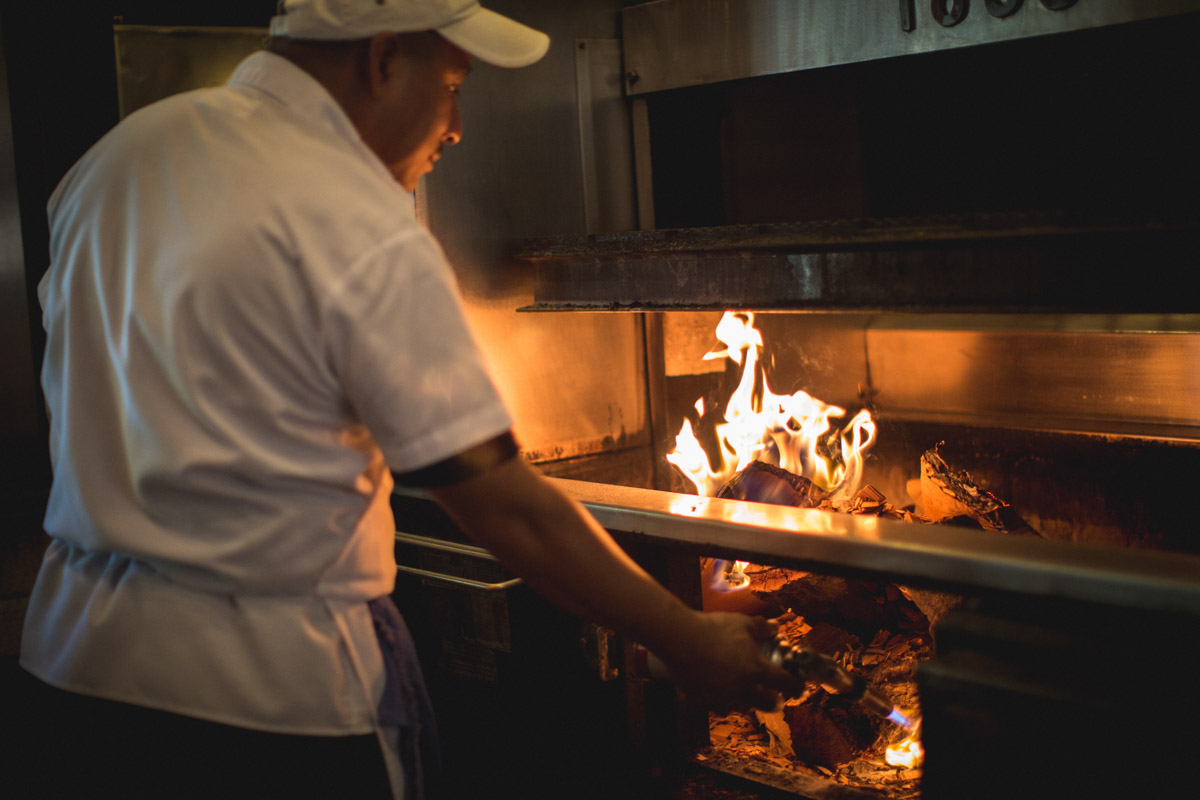
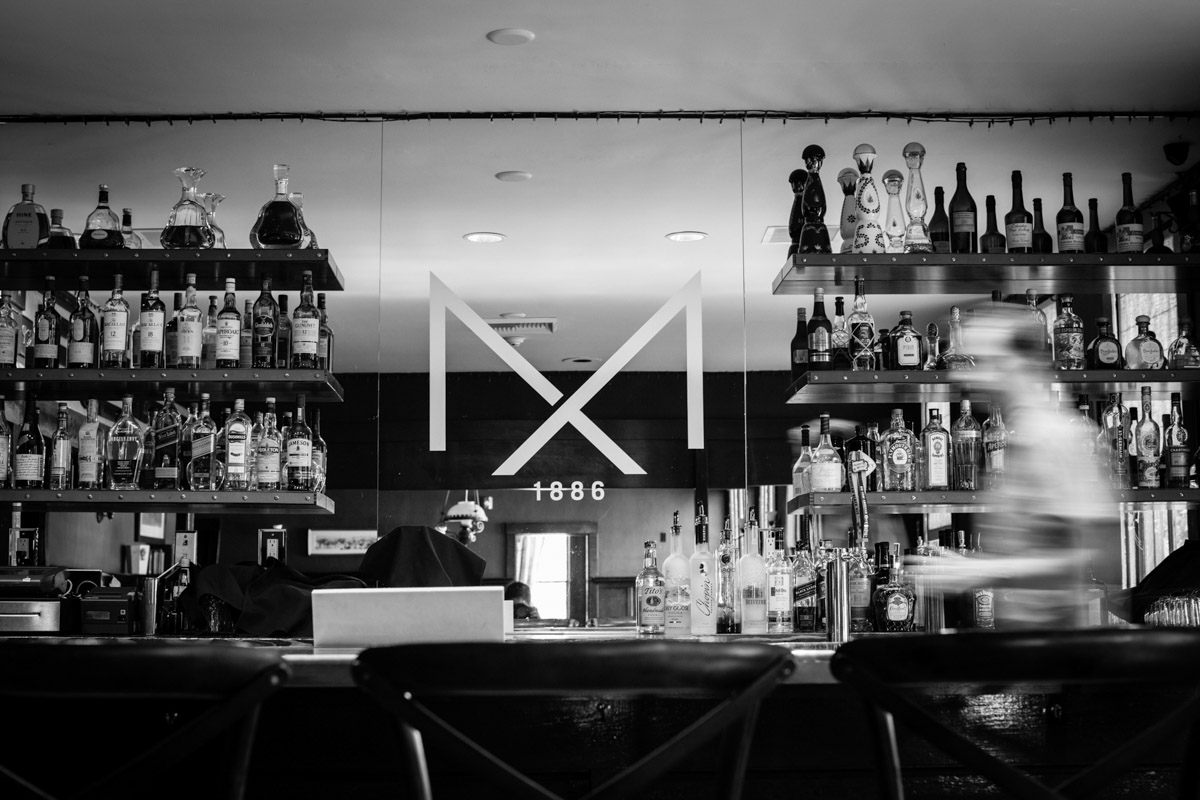
In a way, it’s a similar mentality with diners: visit a new restaurant, Instagram a photo, and then move onto the next.
It’s interesting. I say Instagramming your plate of food before you eat it is our way of saying grace now. Boom, take a picture; I just said grace. I have mixed feelings. Look, people think your food is beautiful and they want to take pictures of it; that’s a really great thing. Guys like Bobby Flay, Emeril and Wolfgang allow me to do what I do. They’ve made my job easier. They stimulate other people to be interested in food, so we all are in debt to them.
But with the ADHD of the diner in the restaurant business, we’re already so debriefed before you go in there that it kind of screws us. The diner, or potential diner, is basing his experience off an opinion off of someone else’s opinion. They might say this place is French, but do your fucking homework; it’s not French.
That’s the thing I feel like is really tough with the diners nowadays—they are so informed. And I think information is a great thing—like understanding technique and ingredients—but everybody on Yelp is a reviewer now. I think what gets lost is, even if you didn’t like that restaurant, that guy is killing himself back there. He’s putting himself on the line every day. He probably has a wife and may have kids, and this jacknut can just go online with no education and comment.
I feel like it’s a wash, for the most part. We certainly love it when someone says something great and we can tweet it, but when they say something bad—and I’m going to sound like a hypocrite here—but why do you feel like you need to hate on people online? I always find out a lot more about the person writing the review than the restaurant they reviewed.
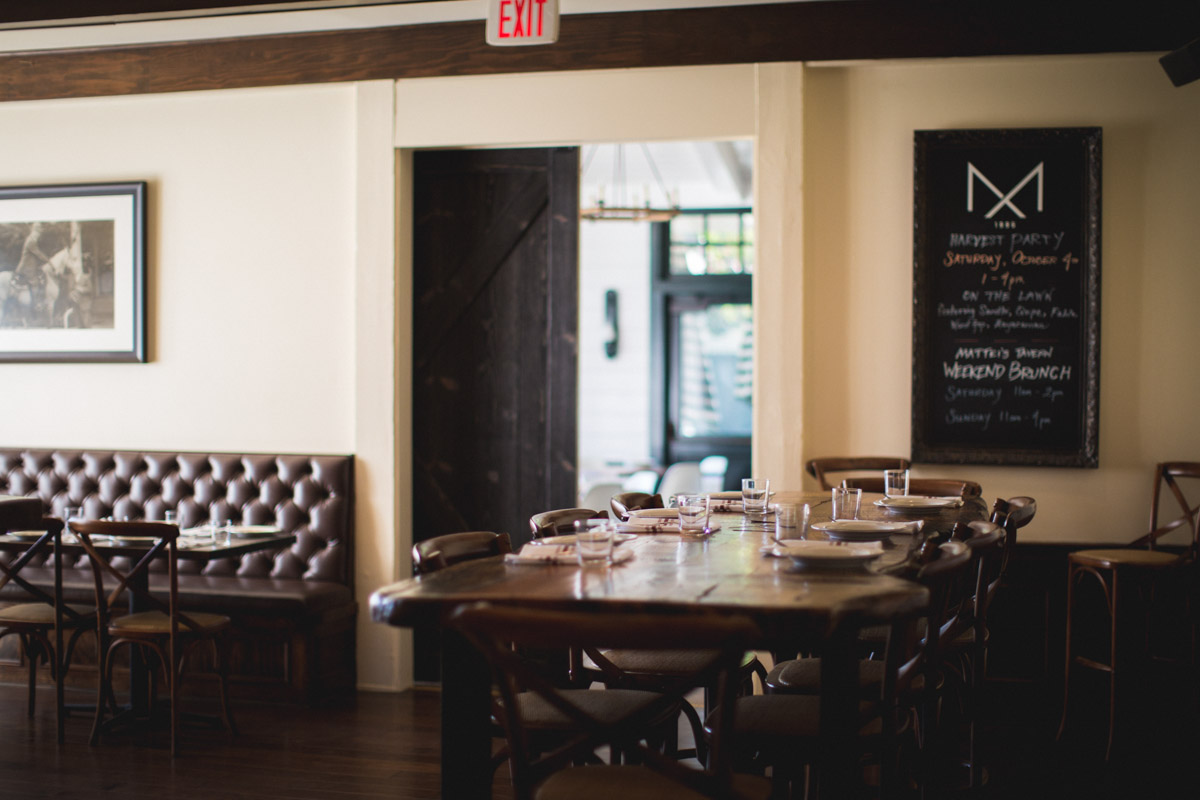
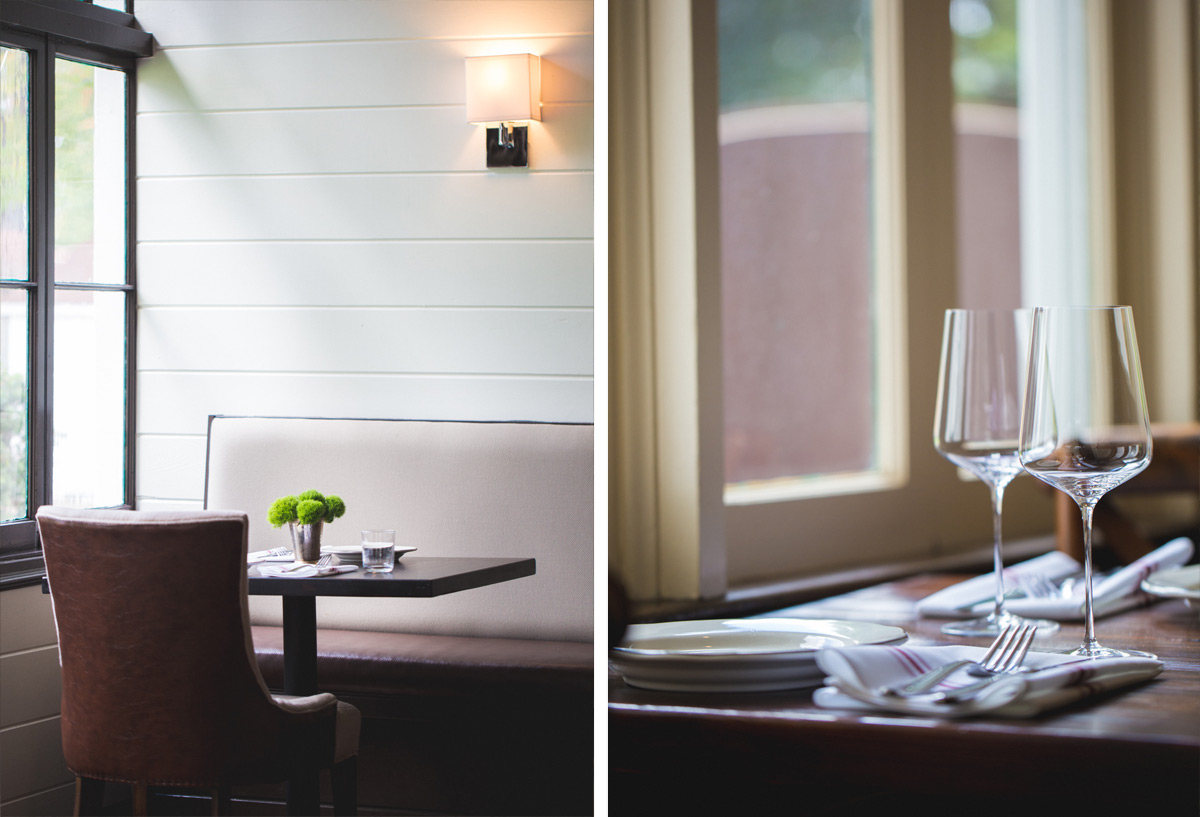
What does your food and kitchen mean to you?
I think it’s about telling a story. First and foremost, it’s not about me. I’m at a point in my career that I want to cook food that I want to eat; but at the same time, I have a story to tell. We’re really here to nourish people—whether we nourish them with flavor and texture, and also the overall experience.
This simple version is essentially you’re throwing a party every night in your own home. And for me, my food should just tell a story. And I don’t want to try to confuse people. I like it to be fairly nostalgic. I think there needs to be a little bit of whimsy and, if I do it correctly, they’re going to wake up in the morning and think, “Man, when can I go eat that again?”

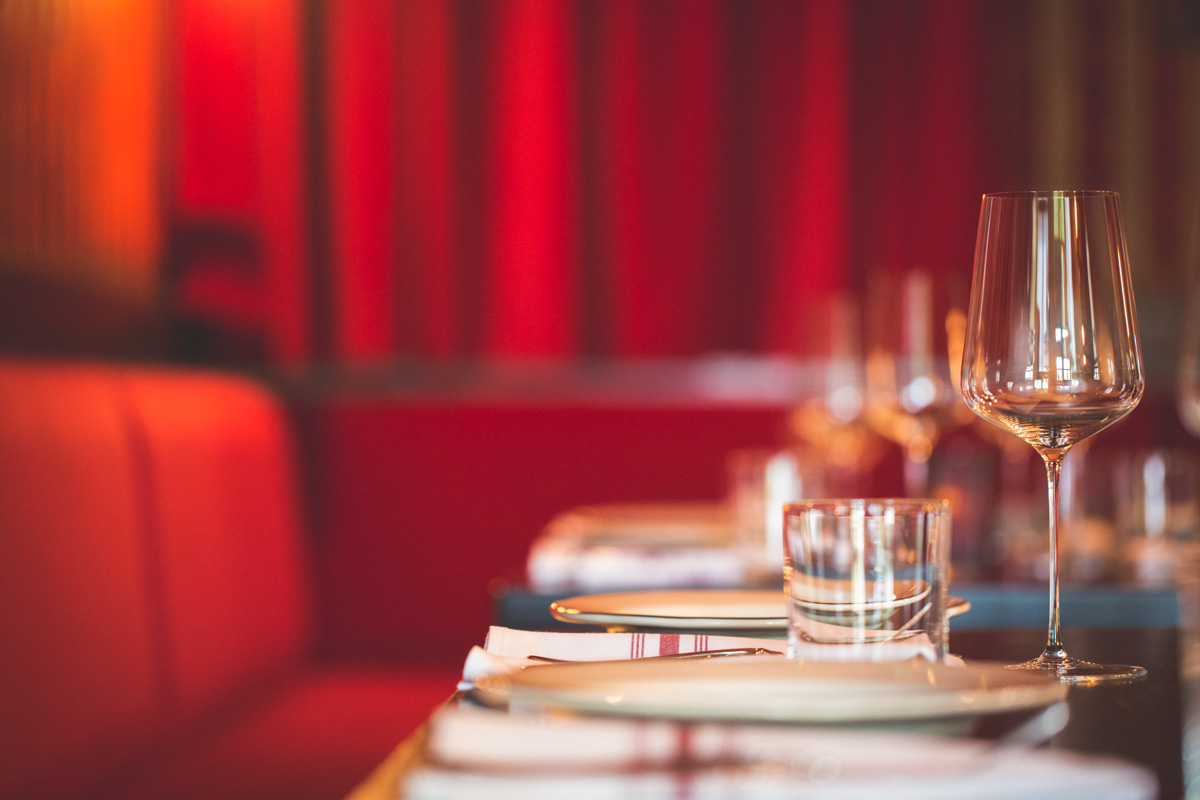
This area is known for exporting most of its product outside of Santa Ynez and not necessarily fostering a strong restaurant scene.
Here’s why: it’s not that there’s not talented people, but there are a lot of cities in this country, and there’s a lot of cooks and a lot of chefs—there are a lot of talented chefs. But if you get to the top-tier cities like New York, Chicago, San Francisco and L.A.—look, we’re all driven by ego and we’re inspired to be around the best. There are a lot of restaurants in those cities. Then think of tier-two cities: Austin, Nashville, Dallas… then there are those guys there. At some point, the well runs dry.
There are some good cooks out here, but if I have a full sleeve of tattoos, I’m 28 years old, and I can get laid with my food, you have to be at a point in your life and you have to have a state of mind where you can really appreciate it out here too. For a lot of young talented guys—I totally get it—this wouldn’t be for them. It’s slow out here; it’s kind of a “farm boy” mentality, and I’m certainly not a farm boy, but I’m 41, have a wife and a kid so it’s great for me.
Man, if you’re young, you should be in the city cooking. You should be going to Chinatown. You should be eating uber-ethnic food. You should be trying other chefs’ food. You can’t do that out here. You can be in touch with the winemakers and you can be in touch with the farms, there’s something to be said for that too. I think every young cook and chef should spend some time out here, but when I was in my 30s or 20s, I wouldn’t live out here. There’s nothing wrong; this place is perfect, but not when you’re 28. A young dude like you would be miserable out here.
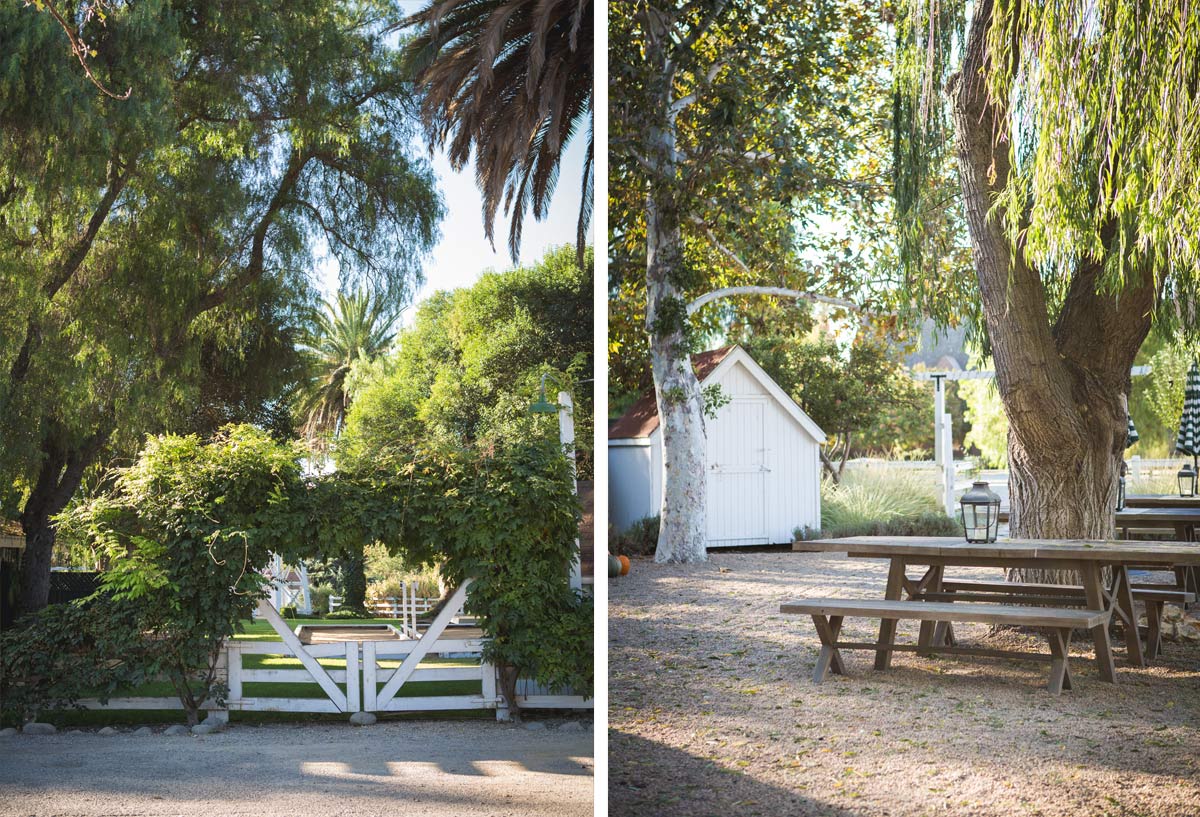
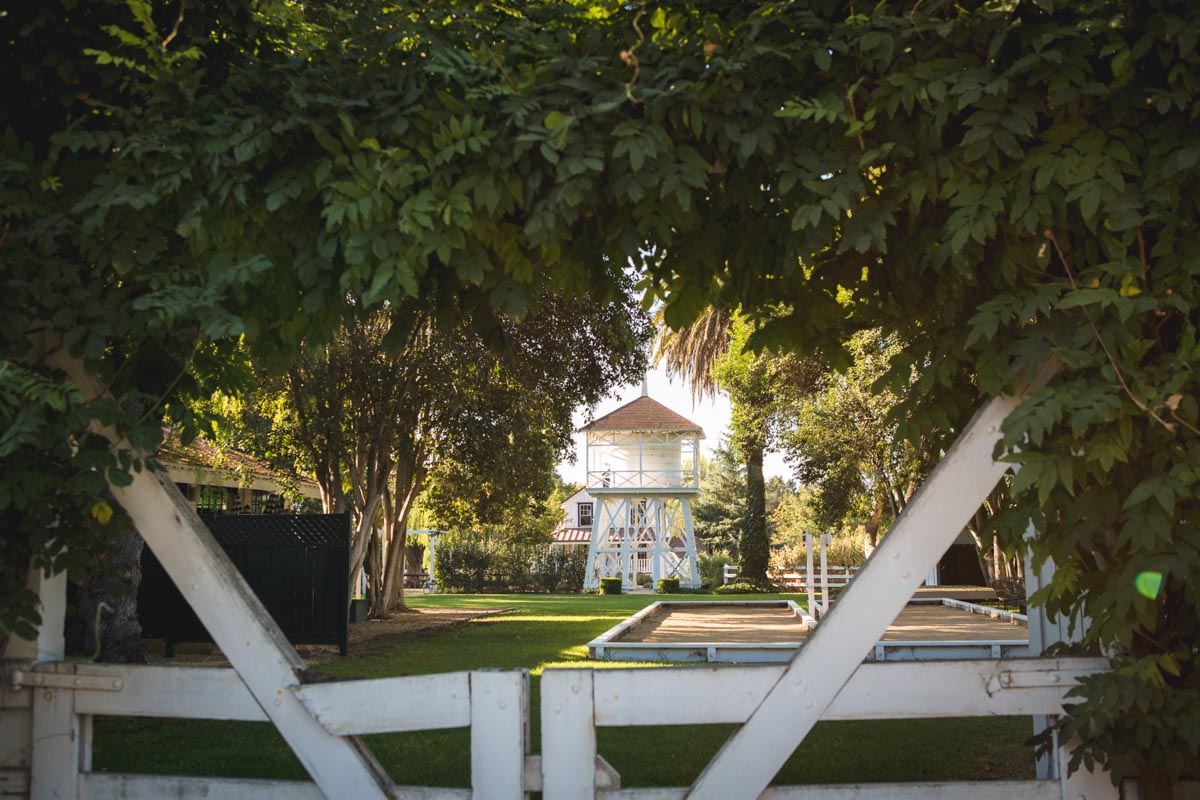
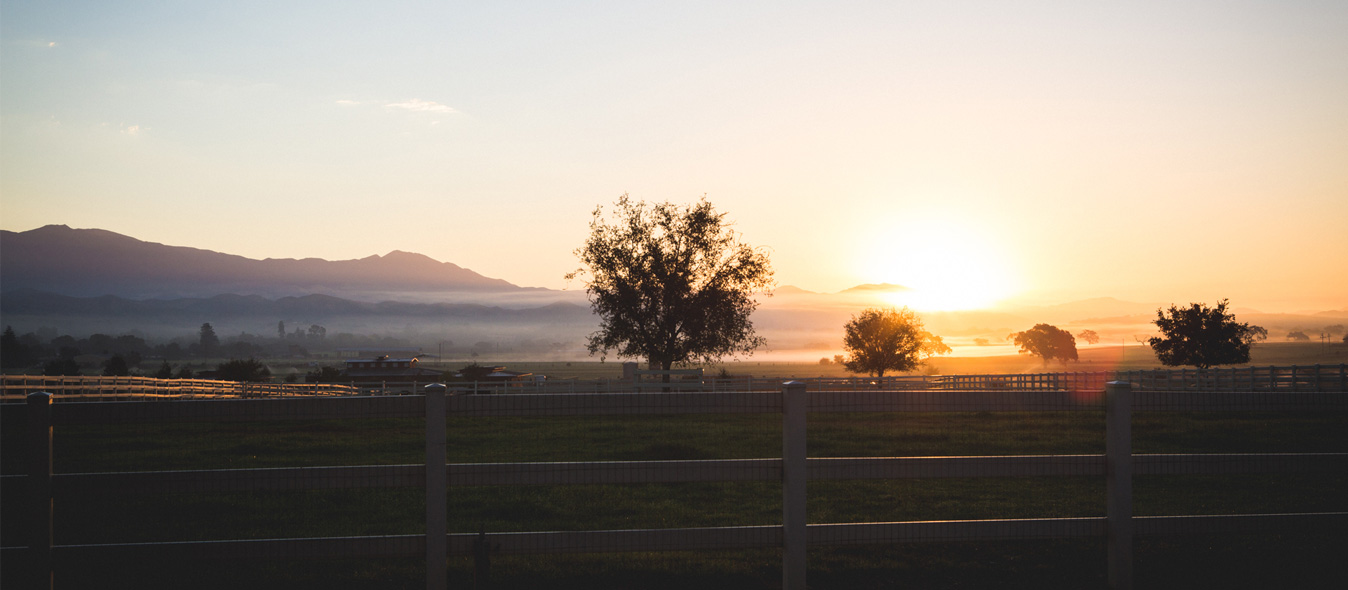
How do the valley, the product, and the people translate to your menu? What are some of those elements you get to see on a plate that is really an homage to what this area is?
We have a little proverb at Mattei’s: It’s a discovery and an interpretation of the spirit of this valley. I have designed this trail map, in a sense. Along the trail we see the history of this area. And we honor that.
I did my due diligence, and I understand the valley and the weight of all the people who have been here. That is along the trail map, and everything we do is essentially along that trail map, meaning we don’t use wheat flour. The history tells us the Hispanics were here first and it was masa. So if you have tempura or you have something fried here, we use masa flour. Now what we find out is: masa flour has great fucking flavor, so we end up winning, right?
So, tempura: if we make tempura okra, we use local sparkling wine instead of club soda and we use masa flour instead of buckwheat flour. And we find out that it tastes great.
Once again, we don’t wear that on our t-shirt, it doesn’t say that on the menu, but that’s what we do. There’s the Hispanic influence here, there’s the Chinese influence here. And at the same time, there’s the influence of Western Europeans in the winemaking, ranching and farming community. It doesn’t really handcuff you. I think it’s important to stay focused and allow ourselves to say, “Let’s resist the urge to do anything too Japanese, too Nordic or too Italian.” Let’s walk that line and let’s follow that trail map. If we stay on that map, we’re going to do what we set out to do in the beginning. And that’s really important.
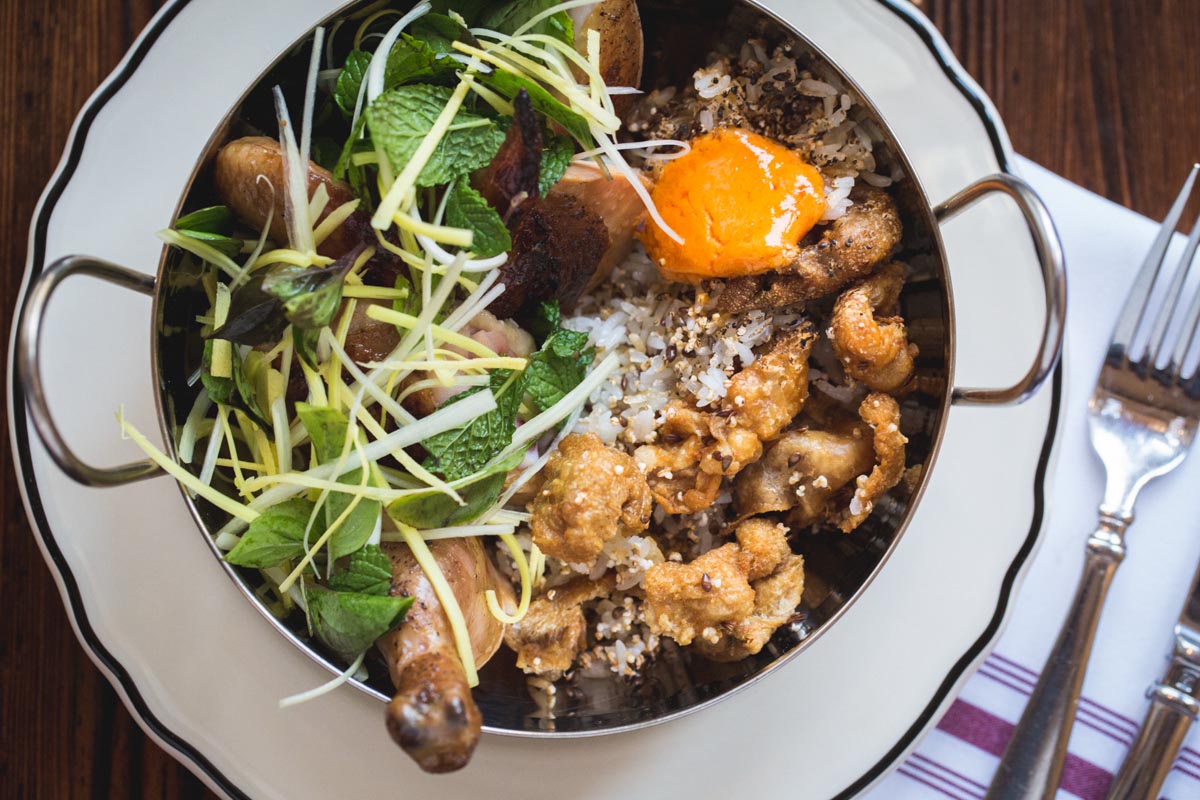
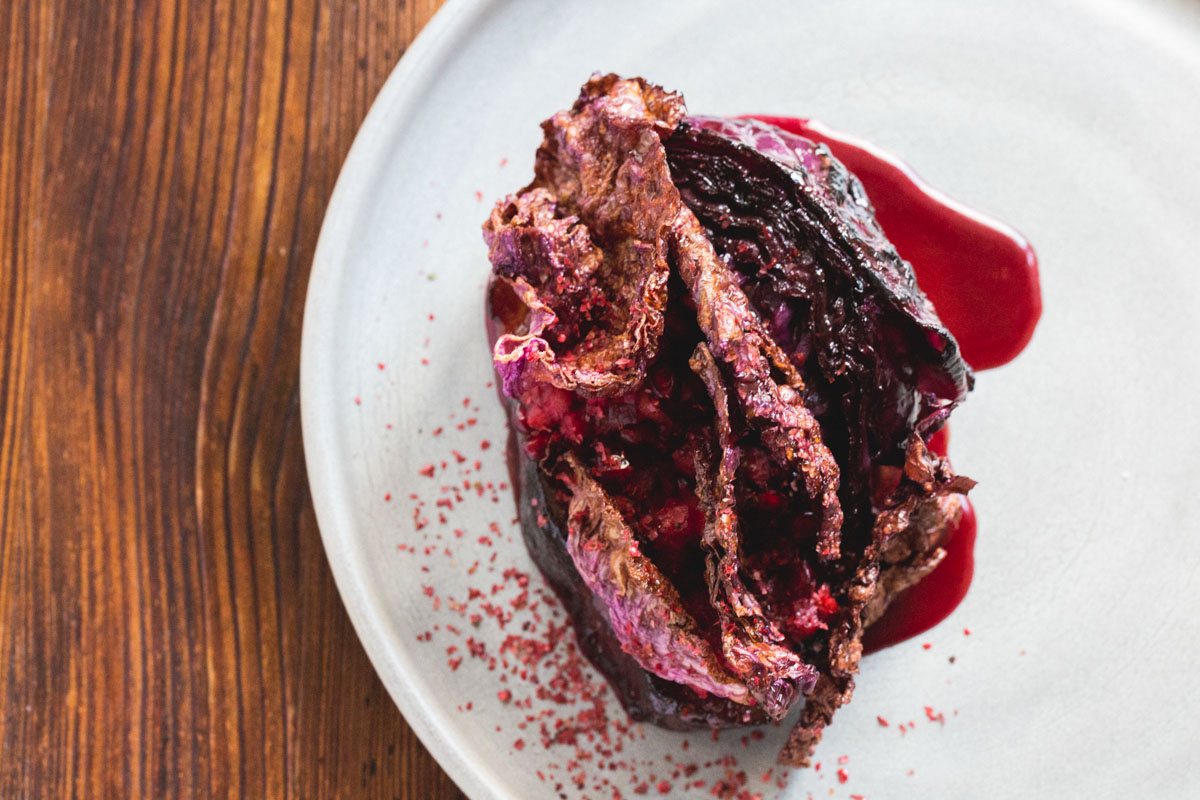
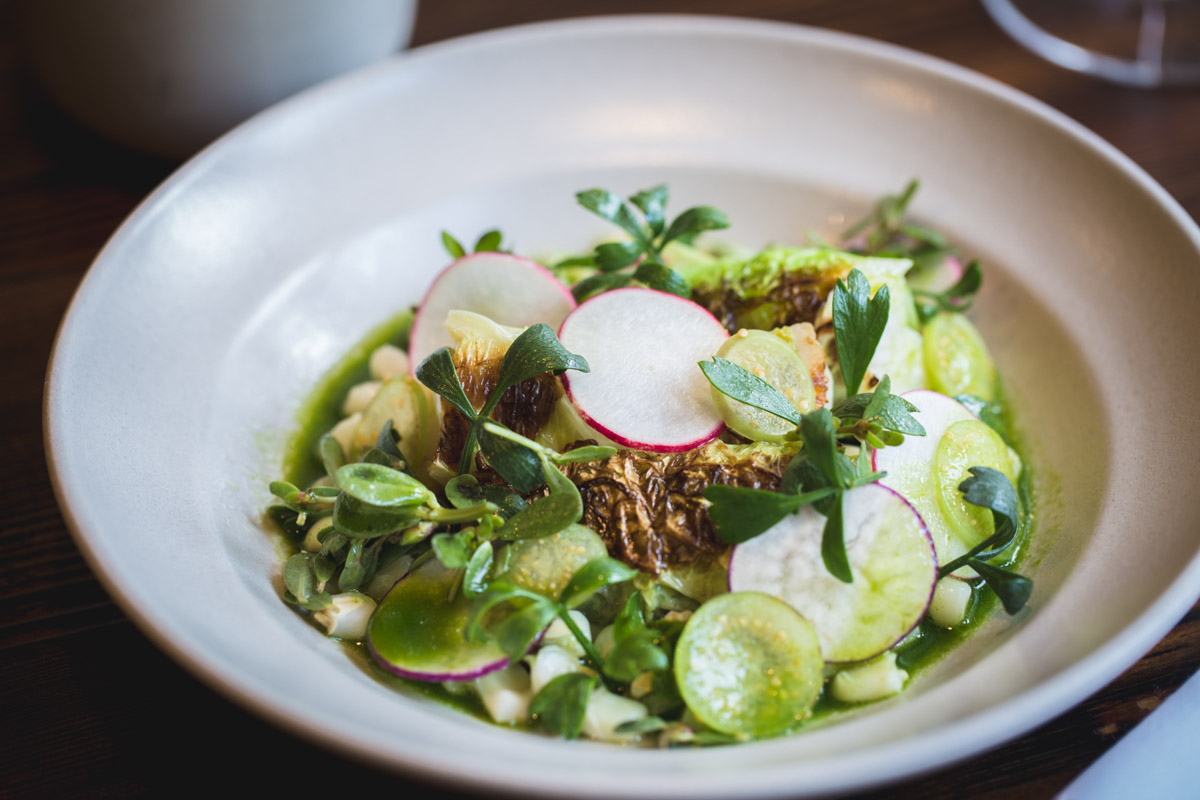
And at the same time, we have a section of the menu that says 1886. So along that line, we’ll take something they would have done back in the day and let that inspire us. But at the same time in 2014, we recognize we have calendars and clocks and watches, so we know where we are right now with cuisine. We use that as a measuring stick that allows us to be a little aggressive in terms of textures and flavor profiles.
But they aren’t two different menus; the philosophy is still the same. What it allows us to do along the trail map is say, “they were eating a whole grilled fish back then,” so we’ll grill a whole fish, but we’ll do it our way. We’re certainly inspired by the history of this valley. That’s how you see it on the plate. That trail map is really important in how we see that. If I have an idea about food I always ask myself that question. They would have pounded meat back then because meat was shitty and tough, so how do we make that fit in the menu (not that we’re necessarily pounding meat)? The meat was usually fatty and fried. So we owe that to this, but we’re not handcuffed by it because it does us a favor.
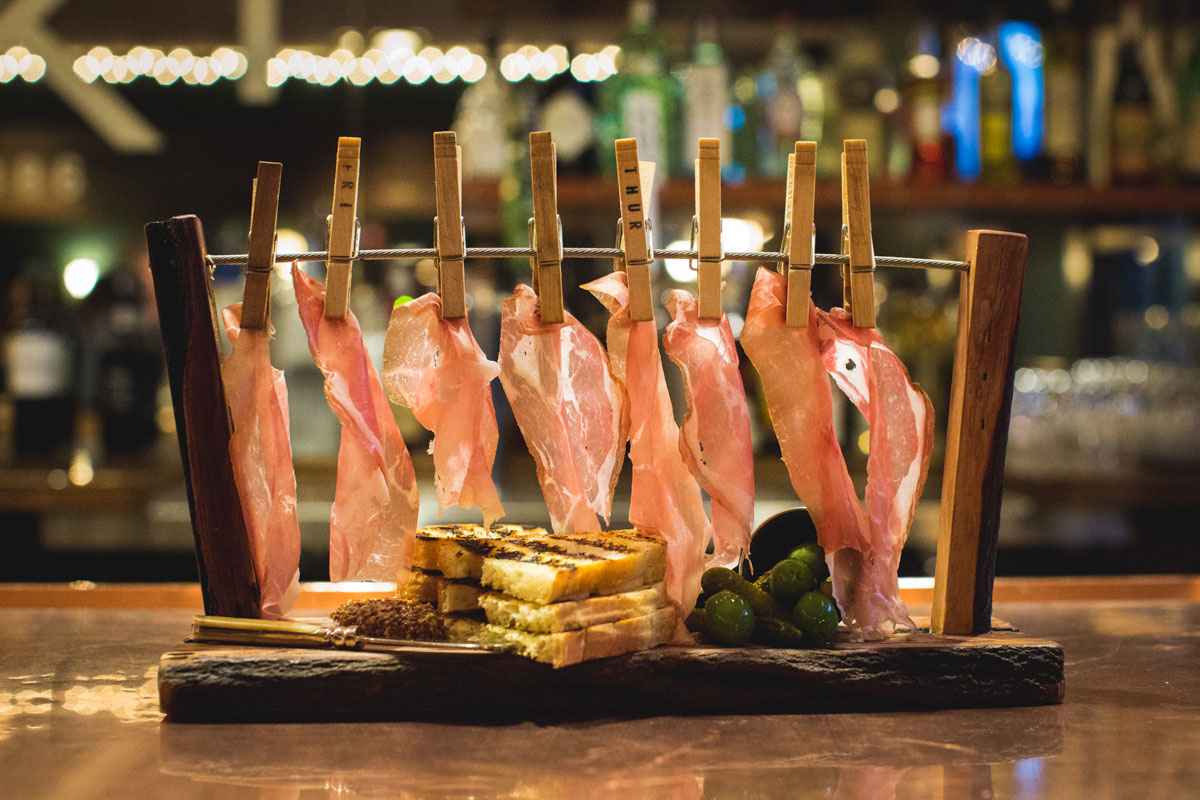
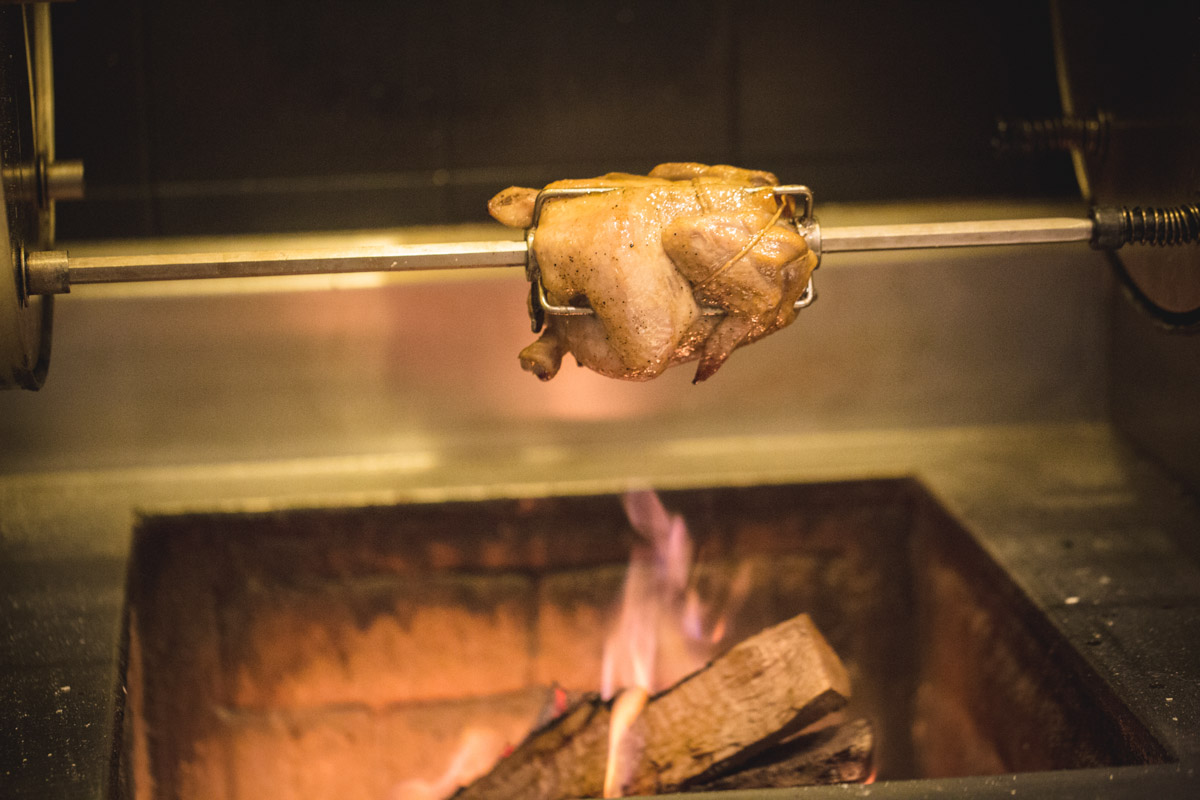
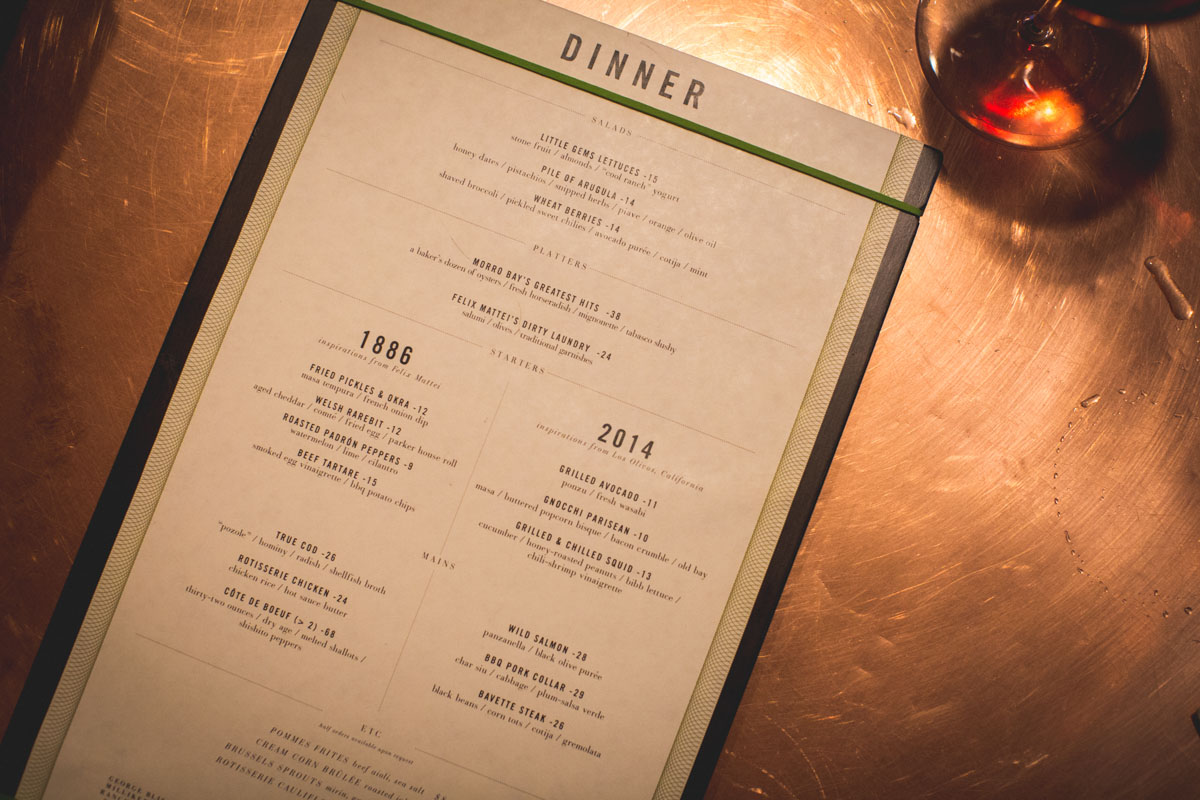
If you could cook for anybody, dead or alive, and invite them over to your dinner table, who would you invite?
You’d have to invite somebody who’s a chef, so you’d have to invite Fernand Point because he was the first guy who pushed the envelope in terms of modern gastronomy. But if we think about people in history, I was always fascinated by JFK, for sure.
Maybe Winston Churchill. He drank Bollinger rosé and drank champagne as well, and I’m a big champagne drinker. I’m not really a history nut, but it definitely engages me and I’ve always been a big fan of his.
But I definitely would want one other person in there who tilts the field a little bit—who’s kind of an oddball, so to speak. I think it would be important to have somebody like Andy Kaufman in there because you need somebody to tip the field a little bit. That’s the only way a dinner party would be interesting. You’ve got to add somebody for shock value, so have Andy Kaufman show up; that would be pretty interesting. You’d have Winston Churchill, JFK, Fernand Point. Although JFK could probably hold his own, as long as there weren’t any women in the room.
—
Mattei’s Tavern
2350 Railway Ave, Los Olivos, CA 93441
—
Historic photos courtesy of Images of America, Los Olivos





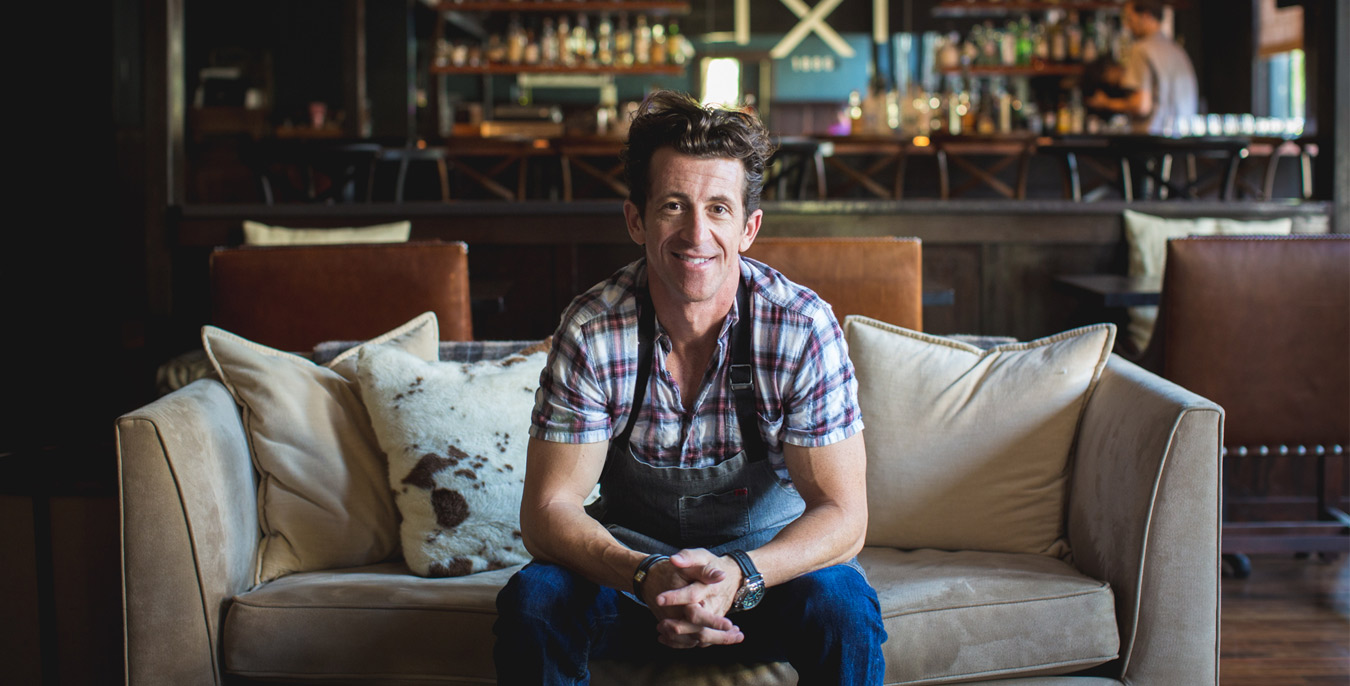

Our comments section is for members only.
Join today to gain exclusive access.